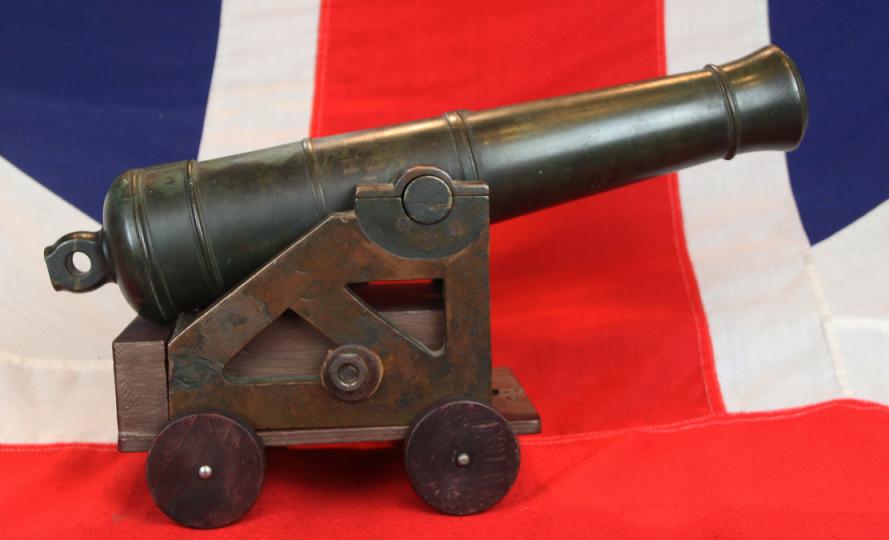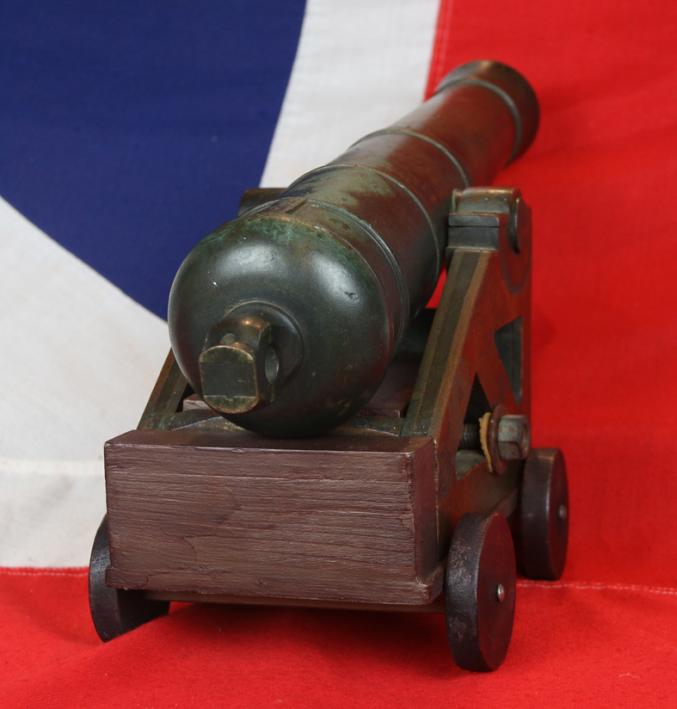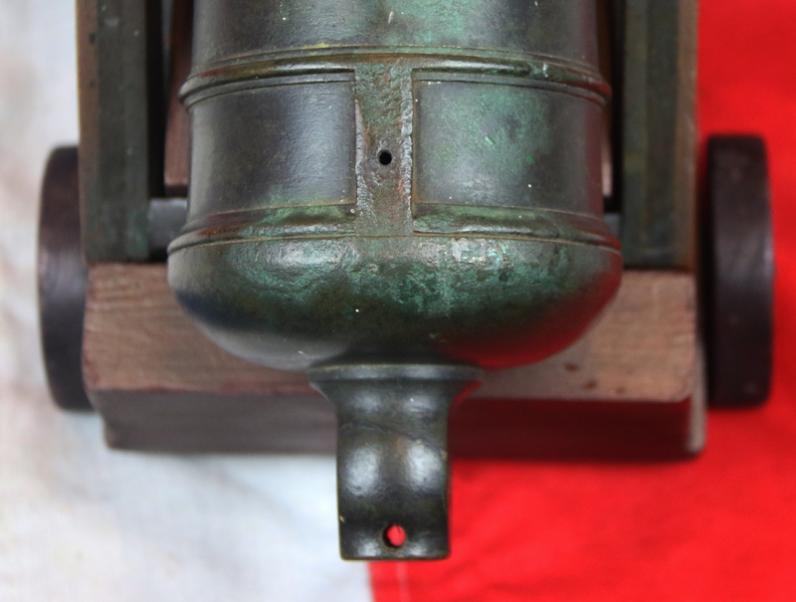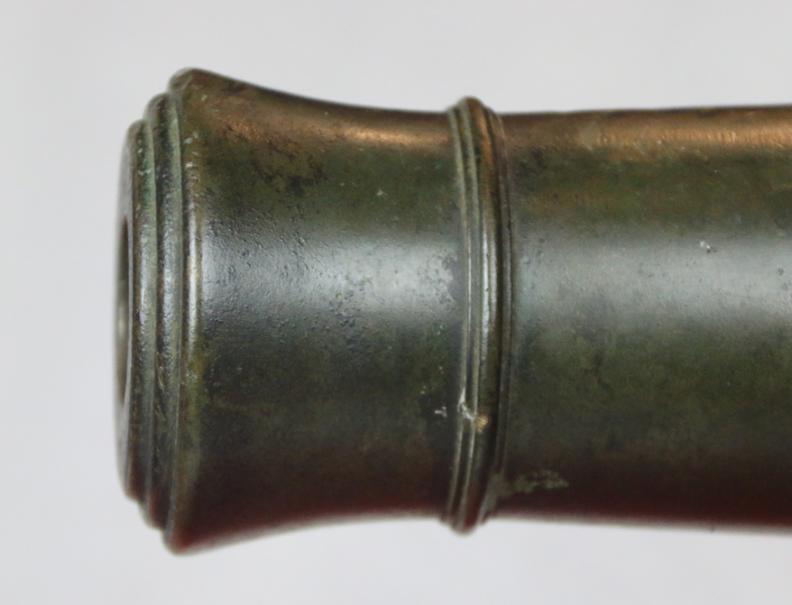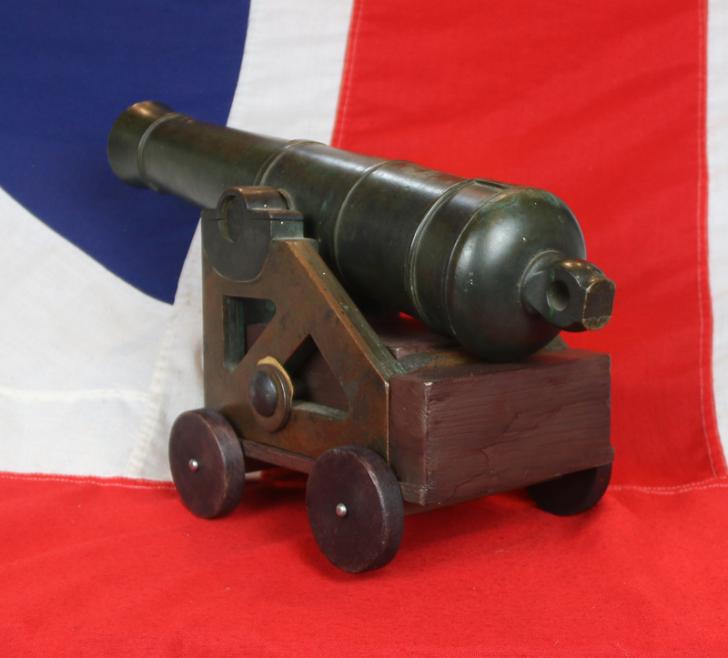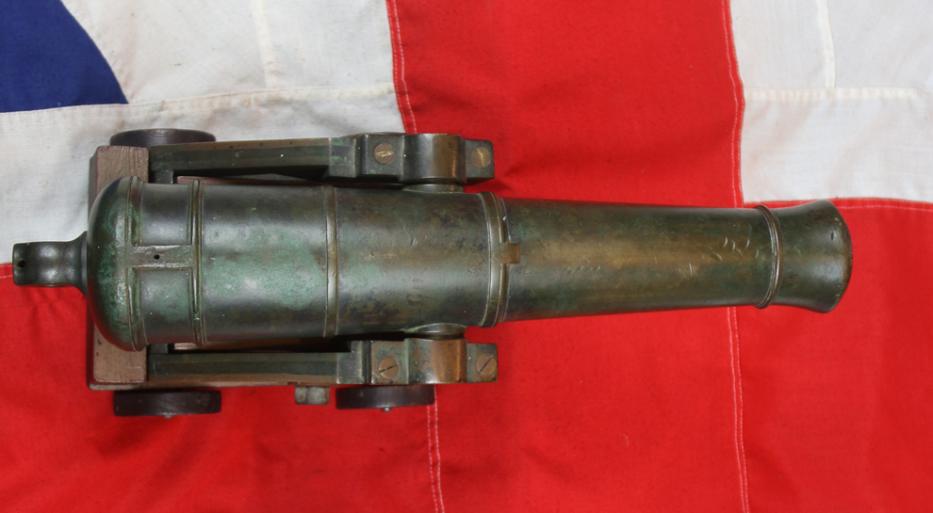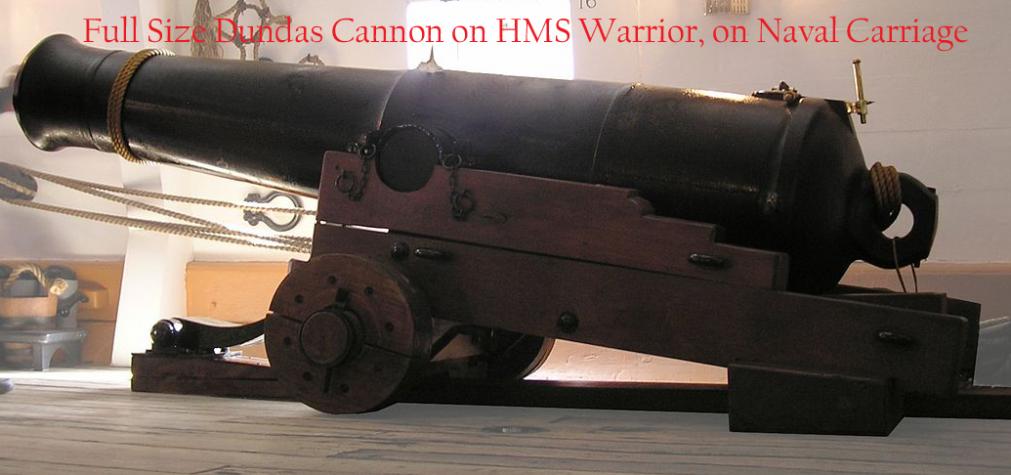A Stunning, Original 1840's ‘Prototype’ Bronze Cannon of a Dundas 32 Pounder Cannon On Original Bronze Carriage For Coastal Artillery. Around Quarter Size Original Presentation Cannon Made Circa 1840 To Demonstrate to The Ordnance To Gain The Contract
An absolute joyful piece, perfect for a former military officer, or maybe a gentleman's study or boardroom. A working bronze demonstrator cannon of a Col. Dundas 1840's pattern cannon, such as a 32 pounder. Likely, in that case , the first ever example of the later known 'Dundas 32 pounder' cannon ever made, but naturally a scaled down version.
The contract submission was successful, thanks in greater part due to this cannon, and thus used by the Royal Navy and Coastal Artillery from the 1840's.
Very possibly made by the cannon maker, at their Low Moor Iron Works in Yorkshire, as the prototype working piece to demonstrate to Colonel Dundas, for the benefit of a Royal Ordnance contract, and probably later became a presentation piece, possibly given to Col Dundas.
What an absolute corker! It is a very fine bronze cast barrel, with superb aged patination, on its original cast bronze and wooden carriage, with wooden wheels. Overall 18 inches long.
This cannon was designed in response to the need for heavier weaponry as armour on ships of the line improved. Colonel William Dundas, the government's Inspector of Artillery between 1839 and 1852, designed the cannon in 1846. It was cast by the Low Moor Iron Works in Bradford in 1847 and entered service soon after. Like numerous cannon before it, the full size version was made in cast iron, and smoothbore, loaded from the muzzle. The cannon was ‘relatively’ inexpensive to produce – the Royal Commission on the Defence of the United Kingdom estimated that each cannon cost approximately £167 around £32,000 today.
Over 2000 were cast before 1861 and its exceptional durability, range and accuracy earned it a reputation as the finest smoothbore cannon ever made.
The use of coastal artillery expanded during the Age of Discoveries, in the 16th century; when a colonial power took over an overseas territory, one of their first tasks was to build a coastal fortress, both to deter rival naval powers and to subjugate the natives. The Martello tower is an excellent example of a widely used coastal fort that mounted defensive artillery, in this case, muzzle-loading cannon. During the 19th century China also built hundreds of coastal fortresses in an attempt to counter Western naval threats.
Coastal artillery fortifications generally followed the development of land fortifications; sometimes separate land defence forts were built to protect coastal forts. Through the middle 19th century, coastal forts could be bastion forts, star forts, polygonal forts, or sea forts, the first three types often with detached gun batteries called "water batteries".Coastal defence weapons throughout history were heavy naval guns or weapons based on them, often supplemented by lighter weapons.
Between 1804 and 1812 the British authorities built a chain of towers based on the original Mortella tower to defend the south and east coast of England, Ireland, Jersey and Guernsey to guard against possible invasion from France, then under the rule of Napoleon I. A total of 103 Martello towers were built in England, set at regular intervals along the coast from Seaford, Sussex, to Aldeburgh, Suffolk. Most were constructed under the direction of General William Twiss (1745–1827) and a Captain Ford. The northernmost tower at Aldeburgh is of quatrefoil design, and there are two towers at Clacton-on-Sea, one near the town and the other to the west near the local Golf Course
Included in the scheme were three much larger circular forts or redoubts that were constructed at Harwich, Dymchurch and Eastbourne; they acted as supply depots for the smaller towers as well as being powerful fortifications in their own right.
The effectiveness of Britain's Martello towers was never actually tested in combat against a Napoleonic invasion fleet. They were, however, effective in hindering smuggling. After the threat had passed, the Martello towers in England met a variety of fates. The Coastguard took over many to aid in the fight against smuggling.
Weight of this presentation piece is 18.5 kilos
Code: 23351
4750.00 GBP


